Discover the Unique Roman Identity of Garbatella
Rome’s charming Garbatella neighborhood, marking its 105th anniversary today, was originally built to accommodate railway and dock workers from the nearby Ostiense industrial district.
The groundbreaking ceremony for Garbatella took place at Piazza Brin on February 18, 1920, graced by Italy’s King Victor Emanuel III, setting the stage for a distinctive south Rome suburb that initially seemed remote to many locals.
Garbatella’s design was inspired by the Garden City concept developed by English architect Ebenezer Howard, with a Roman twist, and the houses were constructed by the Istituto per le Case Popolari (ICP), a state agency dedicated to affordable public housing.
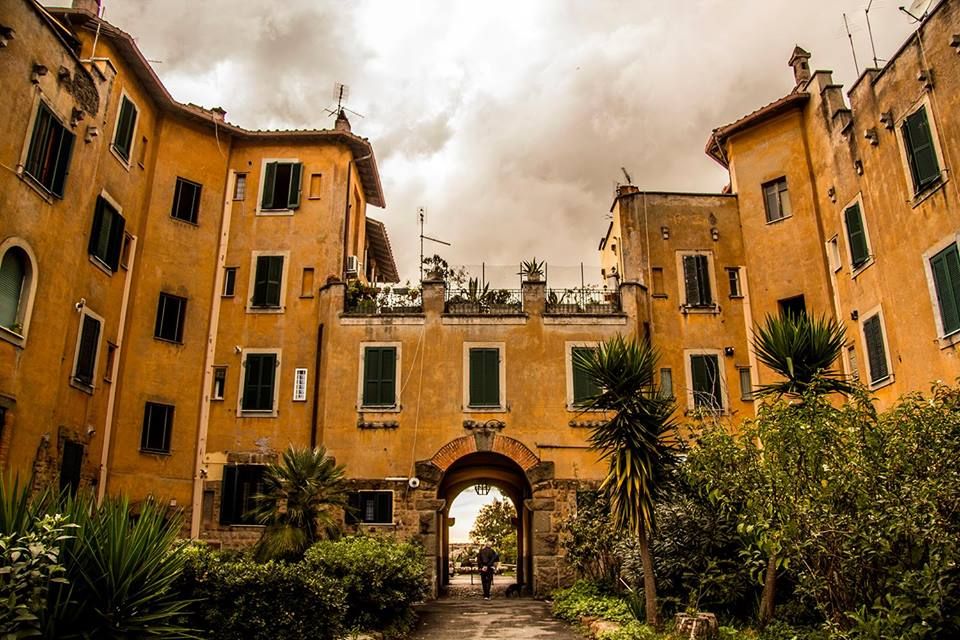
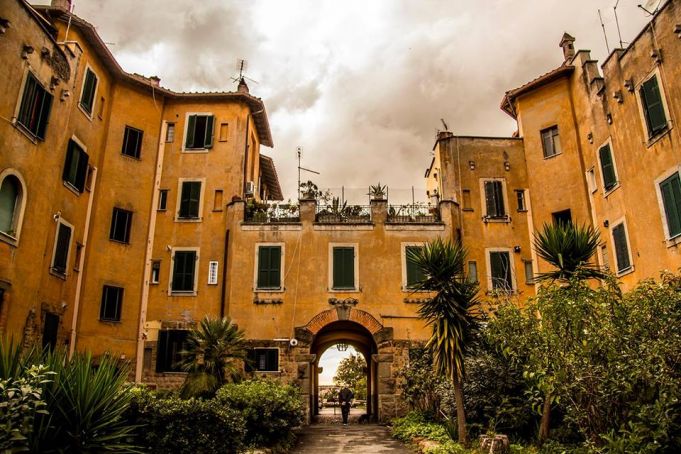
The original part of Garbatella, constructed in the early 1920s, is divided into project units, or lotti, comprising multiple buildings surrounding a communal garden space, serving as a social hub for residents.
Each lotto is numbered, totaling 62 units in all.
This emphasis on community, coupled with the area’s initially secluded location, fostered a strong bond among Garbatella residents, shaping a distinct Roman identity over time.
Garbatella’s original development stands out for its blend of architectural styles, incorporating Rococo, Baroque, and Rationalist influences, along with numerous inner courtyards and urban gardens.
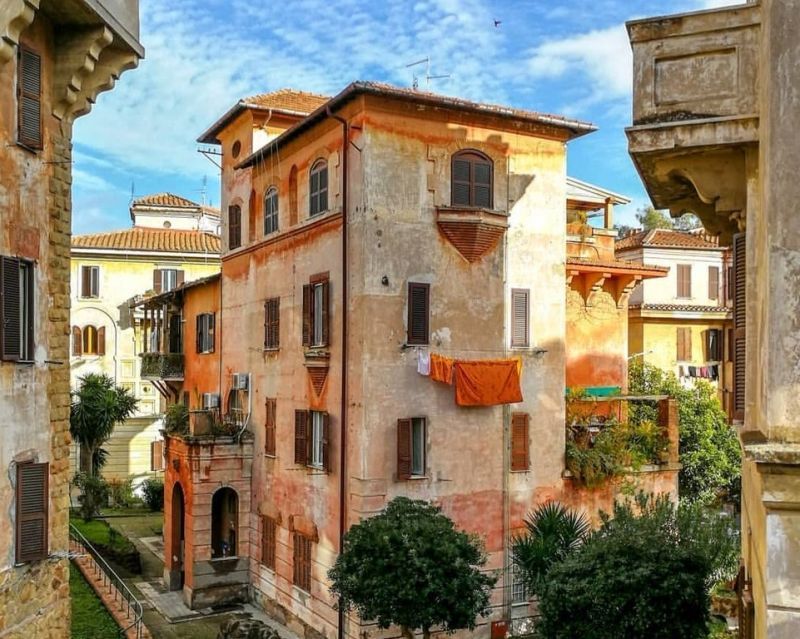
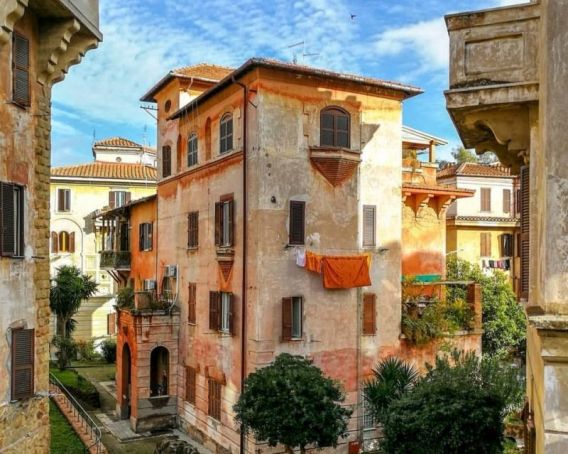
By the late 1920s, Garbatella experienced rapid growth, becoming the most densely populated area in the city.
Although the newer ‘super-blocks’ failed to fully embody the original Garden City ideals due to the rush in meeting housing demand, the older part of Garbatella remains a delightful exploration, adorned with flowers cascading over garden walls onto its quaint, winding streets.
Characterized by its meandering alleys, staircases, allotments, and laundry lines, Garbatella exudes a timeless charm and preserves a village-like ambiance.
Unraveling the Mystery of Garbatella’s Name
As for the intriguing origins of its evocative name, several theories exist, with the most popular attributing it to a beloved local innkeeper named Carlotta (or Maria).
Legend has it that this gracious hostess, or “garbata ostella“, inspired the moniker we now know as Garbatella.
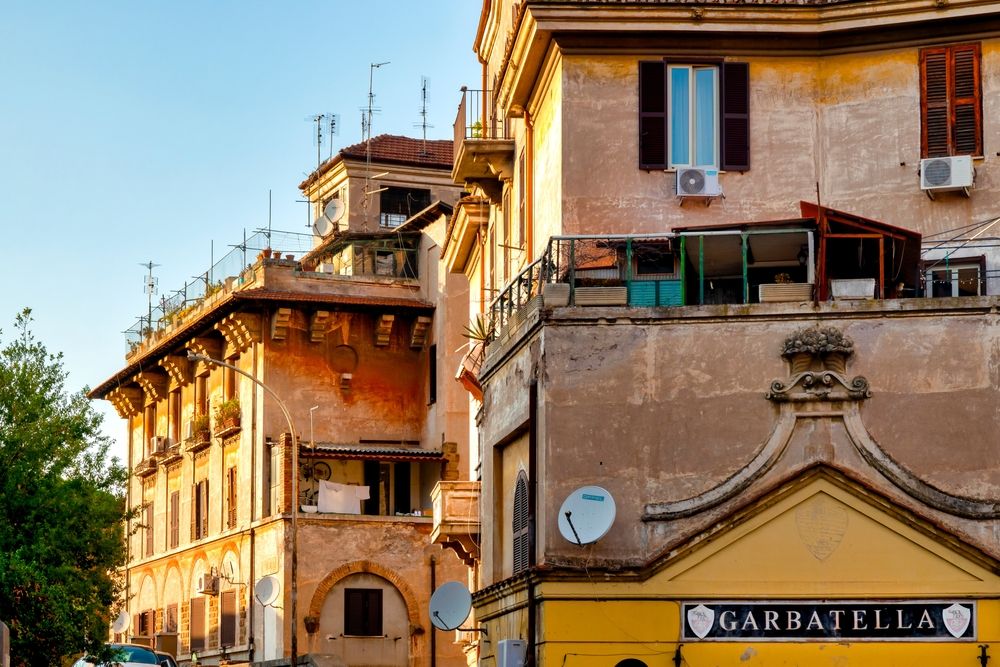
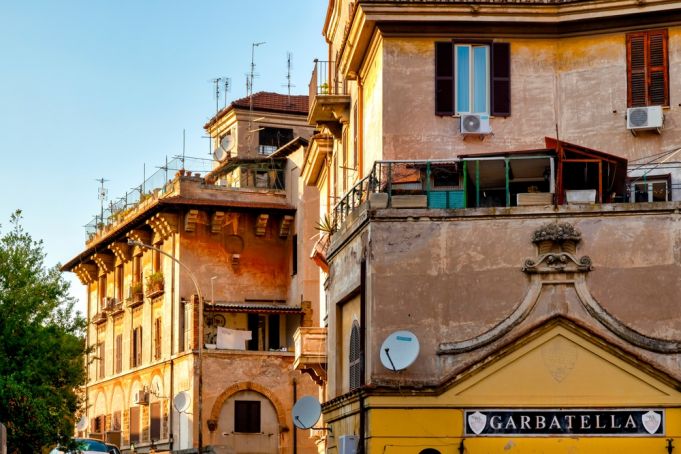
Garbatella on the Silver Screen
Garbatella has served as a picturesque backdrop for numerous films over the years, gaining prominence in the 1993 movie Caro diario by Nanni Moretti, who navigated the area on his Vespa to the tunes of Leonard Cohen’s I’m Your Man.
The neighborhood also featured in the 2005 film Romanzo Criminale and the Italian TV series I Cesaroni, running from 2006 to 2014.
Exploring Garbatella
Garbatella is conveniently located on the Metro B line, just three stops away from the Colosseum, with easy access via several city buses.
One can reach the area by crossing the futuristic white steel Ponte Settimia Spezzichino, named in honor of Rome’s sole female survivor of Auschwitz.
For more details on Garbatella’s 105th birthday celebrations on Tuesday, February 18, visit the city website.



